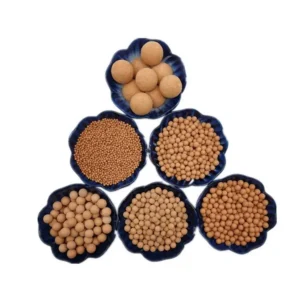In the realm of urban gardening, rooftop gardens are gaining popularity, and lightweight clay balls are emerging as a game – changing element. These small, yet mighty spheres are revolutionizing how we create and maintain green spaces on rooftops.
Composition and Structure of Lightweight Clay Balls
Lightweight clay balls are typically made from natural clay materials that are processed to reduce their density. This results in a product that is both lightweight and porous. The production process involves firing the clay at specific temperatures, which creates a network of tiny pores within the balls. A recent industry report showed that these clay balls are crafted with precision to ensure consistent quality.
Physical Traits for Rooftop Applications
They are easy to handle due to their light weight, making them ideal for rooftop installations where transporting heavy materials can be a challenge. Their spherical shape and smooth surface also contribute to a neat and organized appearance in the garden. Available in various sizes, smaller balls can be used for delicate plants, while larger ones are suitable for more substantial arrangements. A rooftop garden in a city skyscraper used a combination of sizes to create a visually appealing layout.

Drainage Benefits in Rooftop Gardens
One of the most significant advantages of lightweight clay balls in rooftop gardens is their excellent drainage properties. They prevent water from pooling on the rooftop, which could lead to leaks and structural damage. A study by a building research institute found that rooftops using these clay balls in their garden setups had 40% fewer water – related issues. Their porous structure allows water to flow through quickly, keeping the root zone of plants well – drained.
Aeration for Healthy Plant Growth
The porosity of lightweight clay balls promotes enhanced air circulation around the roots of plants in rooftop gardens. Adequate oxygen supply is crucial for root respiration and overall plant health. In a community rooftop garden project, plants grown with these clay balls had more robust root systems compared to those in setups without them. This led to healthier, more vibrant plants.
Weight Considerations for Rooftop Structures
The lightweight nature of these clay balls is a major plus for rooftop gardens. Rooftops have weight – bearing limitations, and using heavy growing media can pose a risk. Lightweight clay balls significantly reduce the load on the roof. A recent news story highlighted a successful rooftop garden that used these clay balls, allowing for a larger and more diverse plant collection without overloading the structure.
Compatibility with Different Plant Species
Lightweight clay balls are highly compatible with a wide range of plant species suitable for rooftop gardens. Whether it’s drought – tolerant succulents, colorful flowers like petunias and marigolds, or leafy greens for urban farming, they can support the growth of all. A rooftop gardening enthusiast in New York shared how he used these clay balls to grow a variety of plants successfully.
Creating Layers in Rooftop Garden Beds
In rooftop garden beds, lightweight clay balls can be used to create multiple layers. A bottom layer of larger balls can serve as a drainage layer, while a top layer of smaller balls can be mixed with soil or used as a mulch. This layering system improves the growing environment and adds an aesthetic touch to the garden.
Maintenance and Long – term Durability
Maintaining lightweight clay balls in rooftop gardens is relatively easy. They are durable and do not break down easily over time. However, periodic inspection is recommended to ensure they are free from debris and pests. In some cases, a gentle rinse can be done to keep them in optimal condition.
Cost – effectiveness for Rooftop Gardening
Despite their numerous benefits, lightweight clay balls are cost – effective. They offer long – term value by reducing the need for frequent soil replacements and minimizing the risk of costly rooftop repairs due to water damage. A home gardener who converted her rooftop into a garden calculated that using these clay balls saved her 30% on gardening costs over a year.
Environmental Sustainability
From an environmental perspective, lightweight clay balls are a sustainable option. They are often made from natural materials, and their long – lasting nature reduces the need for frequent replacement, thus minimizing waste. A study on sustainable urban gardening practices praised the use of lightweight clay balls for their eco – friendliness.
In conclusion, lightweight clay balls offer a comprehensive solution for rooftop gardens. Their combination of physical, drainage, and environmental benefits makes them an ideal choice for creating and maintaining green spaces on rooftops.

